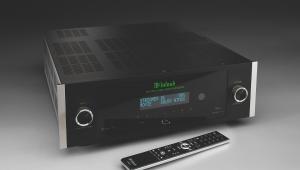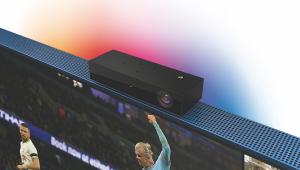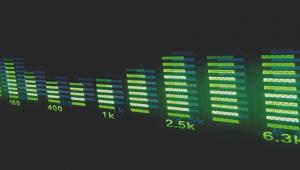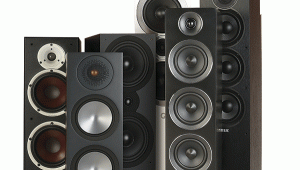Point of View: All aboard the AV gravy train!

Death by firmware update is getting to be a very real occupational hazard. Not just for me, but the AV receiver industry as a whole. You see, I recently reviewed the awesome Denon AVR-X5200W and during the four-week period on test it changed quite dramatically. Twice. Thanks to three major firmware updates and one feature add-on, the product that left the Stevenson Ranch might as well have had a different model number to the one that arrived.
Fresh out of the box, the first firmware update ensured it had Atmos enabled, albeit assuming you had proper in-ceiling speakers. Setup for Atmos up-firing speakers had to be fudged. A week or so later and the fascia tells me another firmware update is available. Bam! The X5200 now has the ability to select and measure up-firing speakers in the GUI. That is quite a fundamental shift, considering it is estimated (by me) that 97.5% of DIY Atmos home cinemas will use up-firing models.
A week later and the AVR-X5200W has been reviewed and the copy is written… when another little notification pops up on the display. This time it’s an update for the Auro-3D feature. Not only does this involve obtaining complex codes and serial numbers from the unit, registering online and paying €149 for the Auro-3D licence, it also needs extra speakers. And cabling. And wall brackets. All thanks to Auro-3D height speakers being in a completely different place to Atmos ones. Delete the review and start again.
So I started to wonder: thanks to firmware updates (and ignoring the elephant in the room that is HDCP 2.2), are we reaching the point where you'll never need to buy a new AVR again? Current CPU/firmware architecture means all sorts of sound and video fettling duties could be added. Given the computing power now sitting in your toaster, let alone an AVR, do you need to upgrade the hardware at all if it isn’t broke? That is the question I asked Denon with regard to my aged £6,500 AVP-A1HD processor, realising it is bereft of 4K, Atmos or Auro-3D. Um, said Denon, there are no plans to upgrade the AVP-A1HD.
For hardware companies the home cinema gravy train has become something of a miniature model railway in recent years, so their lifeblood must remain new hardware sales. Keeping one old AVR bang up-to-date with firmware upgrades, for a decade or longer, simply doesn’t make economic sense. Yet the fast and furious world of consumer electronics means feature development through firmware updates is essential for a brand to offer any sort of product longevity at all.
Shouting 'Lager, lager, lager!'So the question is, at what point do you simply say, 'Okay, just keep the firmware coming and I won’t buy a new product until my old one keels over, gets smashed or ends up in a pint of lager? (which is what has happened to my iPhone 6 at Christmas, unfortunately). For AVRs the problem is compounded by excellent reliability, the inherent resistance to accidental damage of a metal box and their complete inability to fit into a pint glass.
Moreover, now that 3D, 4K and 11.1-channel sound are established as must-have features on top-flight AVRs, I can’t think of any new AV technologies on the horizon that would require completely new hardware. I suspect DTS-MDA will be a simple firmware update for most Atmos-spec models. New AVR sir? Er, no thanks, I don’t need it.
 |
Home Cinema Choice #351 is on sale now, featuring: Samsung S95D flagship OLED TV; Ascendo loudspeakers; Pioneer VSA-LX805 AV receiver; UST projector roundup; 2024’s summer movies; Conan 4K; and more
|






















































